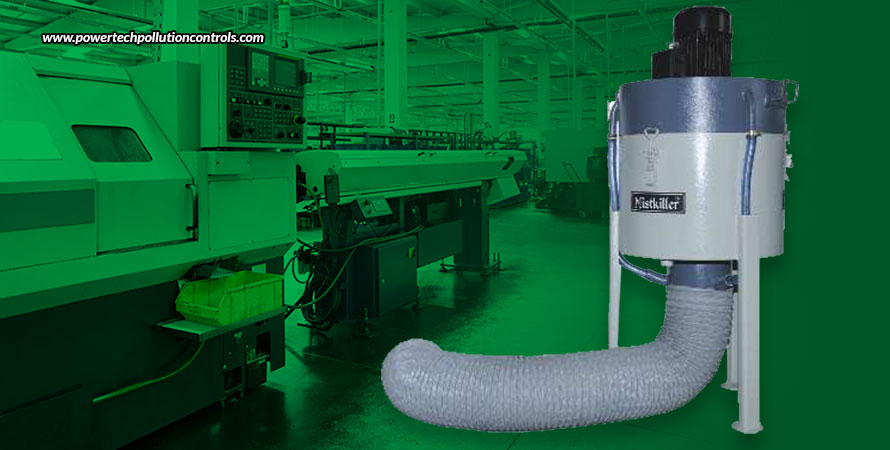
How And Why Oil Mist Needs To Be Controlled
In manufacturing sectors that involve processes like milling, grinding, turning, and drilling, there’s a lot of oil mist generated. In such metalworking industries, metalworking fluids are used to cool and lubricate the machining activity, while ensuring reduced friction between the tool and workpiece, thus prolonging the life of the tools. But, these fluids are a complex mixture containing mineral or synthetic oils, additives, and contaminants, the droplets of which if airborne result in oil mist. Hence, when metalworking fluids come into contact with fast rotating tools, oil mist is dispersed into the air.
What does oil mist do to the body?
When oil mist is dispersed into the air, the large drops enter the nose and trachea, which are then involuntarily swallowed down. The smaller droplets, when inhaled, get deposited in the lungs and cause considerable irritation of the eyes, nose, and throat. Such issues can then result in even more serious health hazards if there is prolonged exposure. This is why effective detection, filtration, and elimination of oil mist is highly important.
How can oil mist be controlled?
Controlling oil mist is a big challenge. That’s because oil mist poses different threats to workers than other kinds of fumes and dust, and also behaves differently. One thing to thus get right in your strategy for collecting oil mist is to choose the right kind of oil mist collector. There are a number of oil mist collectors available to choose from, such as media filter collectors, centrifugal collectors, and electrostatic collectors.
Media filter collectors
Media filter collectors use HEPA type filters to remove industrial mist and smoke oil. Air containing such fumes or mist is drawn into the cartridge media by a fan or blower, which is then forced through the filter, where the droplets and mist are trapped or filtered out by the media material. These collectors are used for all types of wet grinding, cast iron machining, and die casting. Other applications include rubber, plastics, and food processing.
Centrifugal collectors
Centrifugal collectors incorporate rotating filter elements that form trapped mist back into larger droplets, the rotating centrifugal force causing the enlarged droplets to be propelled-free of the filter drum towards the inside wall of the casing, where they are subsequently removed. However, one drawback here is that they generate noise and vibration while operating, and have considerably higher maintenance requirements and costs than other types of collectors. That’s because periodic drum cleaning, regular inspections, and a complete rebuild every few years is important.
Electrostatic precipitator mist collectors
Electrostatic precipitator mist collectors use high voltage to charge and gather small mist particles. The mist enters the collector, which is then passed through a region containing one or more high voltage electrodes. The electrodes apply a charge to the particles, causing them to stick to oppositely charged plates in the system. These collectors provide the most efficient particle collection of sub-micron smoke and fumes. Also, the filters used are reusable multiple times, thus reducing significant costs.
Which oil mist collector to use?
Mistkiller is a trademarked high-efficiency oil mist collector that is designed and developed by Powertech Pollution Controls, for the control of most types of mist generated by the use of water-based coolants and liquids. This mist collector is suitable for applications like CNC and non-CNC machining, cleaning chambers, spraying systems, etc. The Mistkiller can be machine-mounted, or mounted on a separate stand, as required by the application and premises in which it is to be used.


